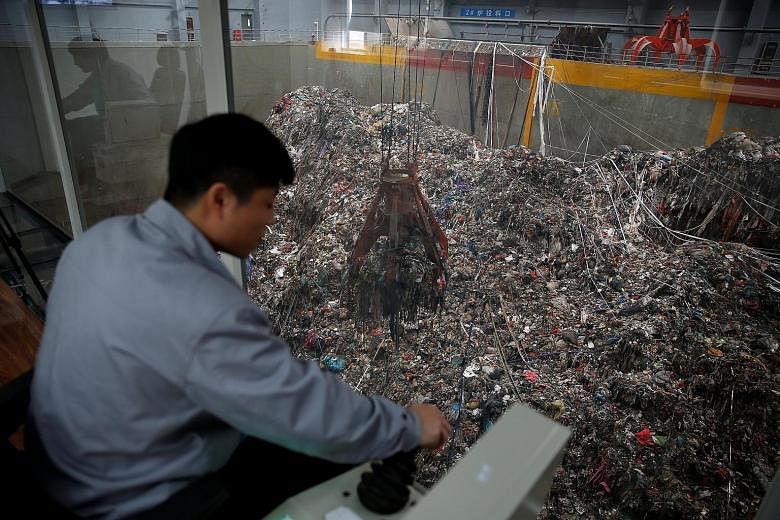WUJIANG (Jiangsu) • Thousands of tonnes of urban waste are hidden behind scrubbed white walls at a new power plant on the outskirts of the Chinese city of Wujiang, with even its chimney disguised as a clock tower.
Desperate to fight mounting trash problems but wary of public opposition, China is building new incineration capacity designed to blend into its surroundings and limit environmental damage.
Sited in sparsely populated farmland around 100km west of Shanghai, the Wujiang plant is designed to burn 1,500 tonnes of rubbish every day. It generates heat to run turbines that deliver 500,000 kilowatt-hours of electricity to the power grid at preferential tariffs, about double those of coal-fired plants and the source of two- thirds of its revenue.
"Combustion reduces the volume, turns it into a resource and detoxifies it, so we believe it is going to be a mainstream product within 20 years," said Mr Cai Shuguang, deputy general manager of China Everbright International, which built the plant. With land scarce and consumption surging, China has little choice but to burn as much trash as it can, he said.
The landfills around Beijing are known as the capital's "seventh ring road", while burial of untreated waste across the country has tainted land and built up potentially hazardous pockets of methane.
Each day, about 200 trucks dump up to 10 tonnes of rubbish in a 26m-deep silo at the Wujiang plant. Toxic emissions are captured and little is wasted, with furnace slag recycled into bricks.
Everbright's first waste-to-energy plant was built in nearby Suzhou over a decade ago. China as a whole had 223 such plants by the end of last year, and that number could double by 2020.
But household waste treatment and recycling rates are still way too low, China said in a plan published in September, adding that industry spending would need to reach 192.4 billion yuan (S$40 billion) from 2016 to 2020.
The plan aims to incinerate more than 500,000 tonnes of waste a day by then, or 21/2 times the 2014 figure. Better-off cities must burn most of their rubbish and curb landfill expansion.
But China has struggled to reach targets, with daily incineration capacity of 235,224 tonnes by the end of 2015 missing a goal of more than 300,000 tonnes.
Mr Cai put this down to a lack of understanding among local governments as well as resistance from local communities.
Waste incinerators have provoked protests as communities worry about the resulting stench and the risk of toxic emissions.
REUTERS

